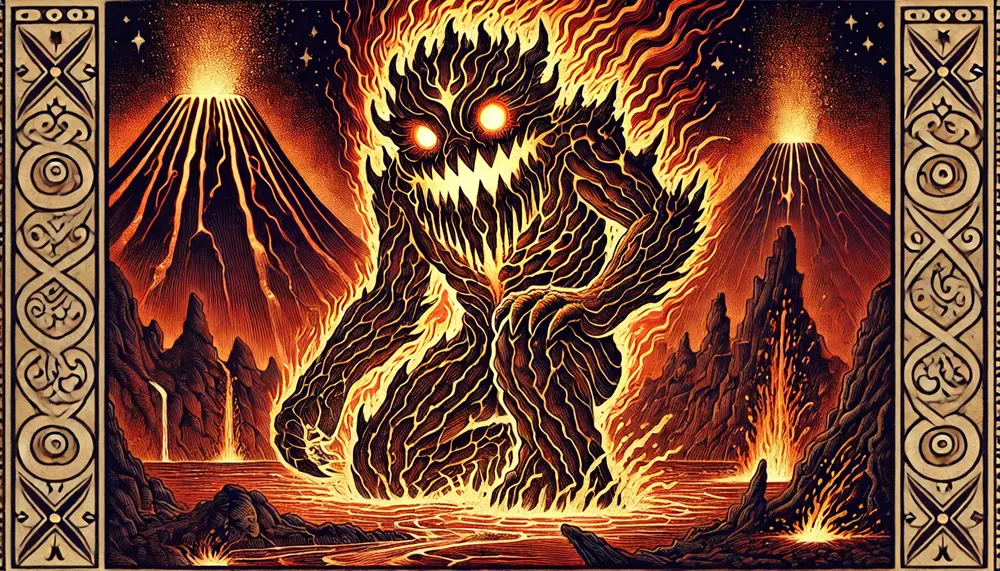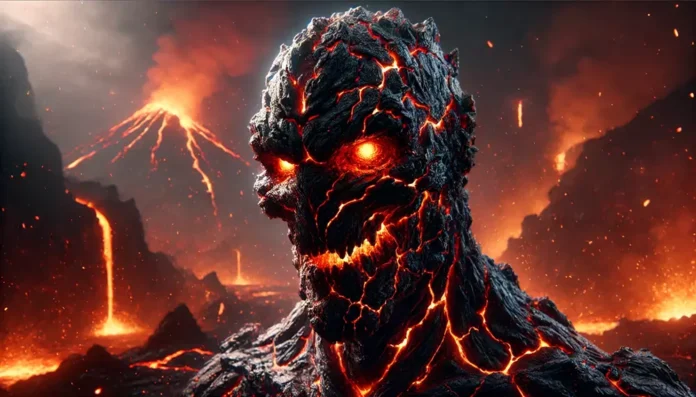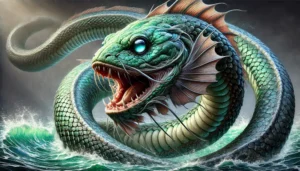Introduction
The Cherufe, a blazing beast of Chilean legend, represents both the power and danger of the Earth’s inner fires. Originating from Mapuche mythology, this creature embodies the destructive nature of volcanoes and seismic activity. Known for its terrifying appetite for human sacrifices, the Cherufe terrorized the Andes with its fiery presence. Even today, it lurks in the folklore of South America as a symbol of nature’s unpredictable fury.
History/Origin
The Cherufe’s story finds its roots in the mythology of the indigenous Mapuche people of Chile. Long before modern technology could explain volcanic eruptions and earthquakes, the Mapuche crafted tales to make sense of these natural catastrophes. For them, the Cherufe wasn’t just a mythical creature—it was a warning. The fiery monster was believed to inhabit the depths of active volcanoes, emerging when disturbed or angered, bringing destruction upon those who dared to disrespect the land.
“Volcanoes were not just mountains; they were homes to ancient spirits, guardians of fire,” as one local legend recounts. This connection to the natural world reflects the Mapuche’s deep reverence for their environment, where the Cherufe became both a symbol of awe and fear.
Name Meaning
The name “Cherufe” derives from Mapuche language and folklore, though its exact etymology remains unclear. The name itself evokes images of heat, danger, and wrath—perfectly aligning with the beast’s fiery nature. The Mapuche used this name to remind their people of the entity dwelling within the earth, a constant warning to respect nature’s raw power.
Appearance
Descriptions of the Cherufe vary, but all agree on its terrifying, fiery form. It is often depicted as a massive, human-like creature made entirely of molten lava and jagged rocks. Its skin is rough and blackened, with streams of lava coursing between its scales, making it resemble a living volcano. Its eyes, fiery and menacing, burn like embers, while its mouth belches smoke and ash.
The Cherufe’s body emits such intense heat that it scorches the ground beneath it, leaving trails of burnt earth wherever it goes. Some tales describe its limbs as long and clawed, able to snatch up unfortunate humans with ease. The beast’s fiery essence and molten rock appearance make it one of the most visually striking creatures in folklore.
Background Story
According to Mapuche legends, the Cherufe’s anger knew no bounds. When neglected or disrespected, the beast would climb from its volcanic home and lay waste to nearby villages. Stories say it demanded human sacrifices to appease its hunger, especially favoring young maidens. If denied these offerings, the Cherufe would erupt in fury, causing massive volcanic explosions and earthquakes.

The elders of the village would sometimes lead a procession up the mountain, leaving offerings at the volcano’s edge in hopes of calming the beast. “The Cherufe’s wrath could not be contained with mere words,” one tale states, “it demanded life and loyalty from those who shared the land.”
Cultural Impact
The Cherufe occupies a powerful place in Chilean culture, symbolizing the awe-inspiring and destructive potential of nature. For centuries, the Mapuche used stories of the Cherufe to instill respect for the land and the dangers of disturbing it. Volcanoes were considered sacred, not just because of their grandeur but due to the belief that they housed powerful spirits like the Cherufe.
Beyond the indigenous Mapuche communities, the legend of the Cherufe has seeped into Chilean folklore, reminding generations of the land’s ancient roots. In this way, the Cherufe represents not only fear but also respect for the unpredictable forces of nature.
Similar Beasts
The Cherufe shares similarities with other fire-related beings across global mythologies:
Balrog (Middle-Earth): In Tolkien’s Middle-Earth, the Balrog is a fire-demon living in shadow and flame, somewhat resembling the Cherufe in its fiery wrath and fearsome form.
Ifrit (Arabian Folklore): Known as fire spirits, Ifrits are destructive and powerful entities in Arabian mythology, like the Cherufe, often emerging from the ground with great fury.
Jinn (Islamic Folklore): While not necessarily fiery, certain Jinn are associated with elemental forces, embodying nature’s ferocious power much like the Cherufe does with volcanic energy.
Japanese Oni: These mythical ogres are known for their association with natural disasters and chaotic energies, mirroring the destructive tendencies of the Cherufe.
Religion/Ritual
In ancient times, rituals dedicated to appeasing the Cherufe were common in the Mapuche culture. People believed that the beast’s wrath could be contained through ceremonies that included offerings of food, valuables, and occasionally human sacrifices. These rituals were meant to honor the land and avoid inciting the Cherufe’s fury.
“Life and spirit belonged to the mountain,” one Mapuche saying goes, emphasizing the belief that the Cherufe was not merely a beast but a guardian spirit of the earth’s core. Rituals often took place during volcanic eruptions or periods of increased seismic activity, times when the Cherufe’s anger was believed to be at its peak.
Scientific or Rational Explanations
The legend of the Cherufe likely developed as a way for the Mapuche to explain and cope with volcanic eruptions and earthquakes. Living near active volcanoes, they would have experienced firsthand the sudden, violent nature of these natural events. Without scientific understanding, they attributed these phenomena to the wrath of a supernatural entity.
The Cherufe served as a mythological explanation for lava flows, eruptions, and tremors, giving a face to nature’s fury. In this way, it became a psychological mechanism, helping communities understand the dangers of their environment and fostering caution and respect for the natural world.
Modern Cultural References
Literature: The Mythical Creatures Bible by Brenda Rosen: This comprehensive guide includes an entry on the Cherufe, detailing its origins and characteristics within South American folklore.
Video Games: Shin Megami Tensei Series: The Cherufe appears as a demon that players can encounter and recruit, reflecting its mythological roots.
Role-Playing Games: Dungeons & Dragons: The Cherufe has inspired the creation of fire-based elemental creatures in various campaign settings, drawing from its volcanic associations.
Chilean Folklore Art – Various artists in Chile create paintings and sculptures of the Cherufe as a part of folklore exhibitions, showcasing the creature’s fiery form and its connection to volcanoes.

Conclusion
The Cherufe represents the fiery core of Chilean folklore, a creature born from the earth’s rage and revered by the people who lived in the shadow of volcanoes. Through the centuries, this beast has transformed from a mere legend into a symbol of respect for nature’s unpredictable power. Modern interpretations keep the legend alive, bridging the ancient fear of volcanic forces with today’s fascination for mythological creatures. The Cherufe’s story reminds us of humanity’s age-old need to explain the unknown, to face our fears by personifying the natural elements we cannot control.








